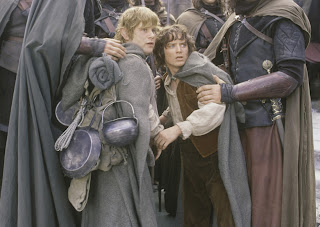

If we discard these assumptions then Utumno must have been located closer to Cuivienen than shown on Fonstad’s map. Given theses two assumptions, maybe it’s not such a stretch to accept that even from 2400 miles away, the elves could have seen and heard the siege of Utumno. Notwithstanding the unknown physics of Ea and Arda, would it have been possible for the elves to hear the sounds from the siege of Utumno and see the lights (from fires) and great clouds (of smoke?) arising from it that far away? Based on other observations, we can assume that 1) Arda was flat then so there was no horizon and 2) elves have far superior vision than other races. It's therefore the case that at the time the LotR map was designed, the intended location of Utumno would have been somewhere under the Belegaer, to the north-west of Himling.įonstad’s map places Utumno more than 2400 miles (using the scale provided) from Cuivienen, where the elves awoke and began their journey toward the west. Utumno and Angband as separate fortresses both dating back to early times entered in post-LotR revisions to the Quenta Silmarillion texts, specifically those which CT names "LQ 2" and dates to 1958. I'm not aware of anything more definite than that, and based on this statement I conjectured here that the Ruins of Utumno are actually under the Icebay of Forochel.Ī complicating factor is that at the time LotR was written, and the geography of the Third Age was designed, Utumno was actually not a separate fortress at all, but rather Angband was built on the ruins of Utumno following Melkor's return from destroying the Trees. Indeed those colds linger still in that region, though they lie hardly more than a hundred leagues north of the Shire. These are a strange, unfriendly people, remnant of the Forodwaith, Men of far-off days, accustomed to the bitter colds of the realm of Morgoth.

Regarding the location of Utumno, the only statement giving a clue is in footnote 25 to Return of the King, Appendix A: There's no Tolkien map (at least none published, or unpublished that we're aware of) to provide a basis for this, aside from the north coast, which was based on a Tolkien sketch map in HoME 7. The second map is obviously based on the first, but with the new coastlines following the Drowning of Beleriand in place. The original map just had coastlines, mountains, some rivers, and other major geographical features, and much of what's on the Fonstad map is either conjectural or deduced from information elsewhere (an example is the relationship between the Inland Sea of Helcar and the Sea of Rhun, which comes from a CT note in HoME 11). The first map above was drawn by Karen Wynn Fonstad, is from The Atlas of Middle-Earth, and is based on an old Tolkien map published in History of Middle-earth 4.


 0 kommentar(er)
0 kommentar(er)
